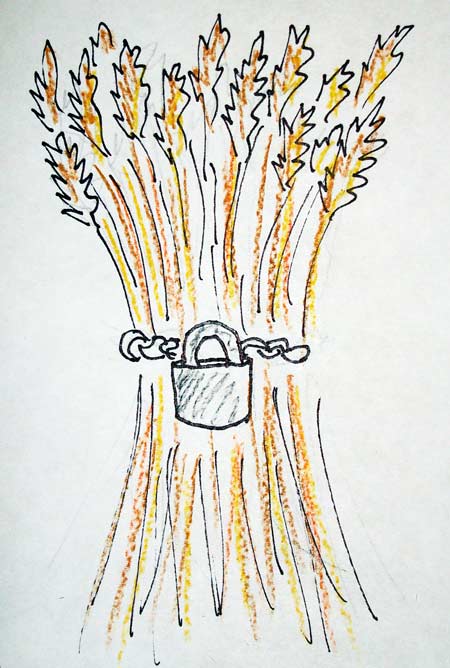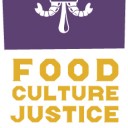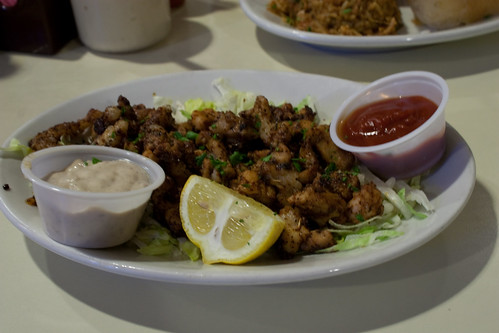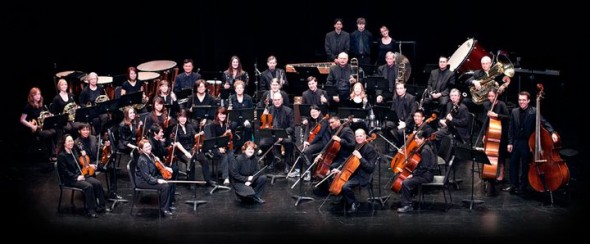It’s been about a month since I arrived back from the CFSC conference down in New Orleans and I’ve finally had a chance to put together some of my notes and thoughts on the experience. Overall it was a fantastic experience and I’m really glad I had the opportunity to go. While it’s difficult to compress all the experiences, notes, thoughts, and impressions down into a short (ok, long) post, here goes:
CSFC Opening Plenary
The opening plenary featured 3 great speakers who I believe collected set the tone and the scene for the rest of the conference. The key points I noted from Brenda’s message is that this is a hopeful and inspirational community out there. Together, we are here to share our ideas, wisdom, knowledge and take it back to our respective communities to make it a better place. Lolis continued on with this theme, talking about food as culture, and sharing a story about the locals who felt most at home with their red beans and rice, even if they had migrated to another State or country. His message reminded me of one of the program’s The Stop put on by growing ethnic food from a variety of cultural backgrounds. Because, if we are to connect and engage all communities, the easiest (and maybe best) way, is to start by understanding their food, their culture, how it is shared, and how people are connected to it. Finally, Pam concluded the panel discussion talking about connecting to people through stories and how food can serve as a tapestry for these stories. Continuing on with this metaphor, she went on to say that the more interconnected and woven together we are, the stronger the bonds and the communities we work in.
One of the things that really resonated with me was this: food security is not about avoiding starvation. It is as much about security – a tangible feeling, a safe environment, or regular access to food – as it is about the actual food itself.

The Workshops:
There were so many interesting workshops, it was very difficult to choose. My rationale in choosing which workshop to attend was based on the following criteria and in trying to maximize the net benefit from each session (yes, that’s business school training/thinking at work here). For example, how much of this stuff do I already know or can learn easily through online research? What kinds of networking opportunities will be available with the presenters and other participants?

The first workshop I went to was about credit/capital as a business tool for farmers. The presenters were extremely knowledgeable, and shed insight on the credit system and how it relates to farmers. For example, loans are based on asset value and what the bank can get in the case of foreclosure. They don’t really care about your cash flow, your reputation, or other issues. It’s about the cold, hard facts. Farming is also very different than your typical desk job. There are many initial production and pre-season costs, and the farmers are at the mercy of many factors such as weather, the global market, and their skill that it is impossible to predict the yields/finances of the farm at the end of the season. Despite that, farmers are critical to the functioning and well-being of our society. And those that are doing things differently (ex. CSA’s, new and emerging markets), are being failed by the current system. It is an extremely difficult industry to be starting out in, and many people are faced with a choice between the lesser of two evils – scale up or get out when it comes to surviving and making a living out on the farm. In this session, I really enjoyed they had a female fisherman come out and talk about the similar challenges facing the fishing industry. I think they have an even harder uphill battle as so many people view fishermen as rapers and pillagers of the sea. And as year-round demand for certain fish rises, we are starting to lose touch with the cycles of the ocean and catching/eating specific fish during different parts of the year. With the advancement of technology, we are no longer limited to how hard and how fast we can row, but rather by the supply and demand of the global market that don’t take into consideration There is so much more that can be discussed (this was the session I took the most amount of notes in), but in the interest of brevity (well my attempt at it anyway), I’ll leave it here for now.
Youth Food Policy Councils: Engaging Youth Within the Food Policy Framework Workshop:
This was the session that Tracy, Michelle, and I were facilitating. The workshop featured a short overview/presentation on food policy councils and the local scene in Toronto before breaking out into small group discussions using a format called Open Space Technology. You can read more about the workshop and participant notes here. We had a total of 32 participants and everyone gave us really positive feedback. In fact, one woman stood up towards the end of the workshop and said something to the extent of “until now, I thought all young people were lazy and not doing anything interesting, but you guys proved me wrong and this has been the best workshop of the conference so far”.
We gave a recap presentation to the TFPC, who helped fund us in going to the conference, and the thing that I mentioned that really resonated with me is that while we’re working away here in Toronto, this conference and this workshop focused on the bigger picture. That is, how can we help, empower, and motivate other young people to go into their communities to start their own youth food policy council, and how can we inspire, collaborate, and support other young people working across the country in other similar and worthwhile initiatives. Well, through this session, the networking, the website, and personal connections that were formed, I think we’re off to a great start so far.

Foraging for Funding: Is Social Enterprise Right for Your Non-Profit Workshop:
During this workshop time slot, I was debating between this session and one on creating healthy soils. I’m happy I ended up at this one because of the chance to experience a new way of group brainstorming and problem solving using the format of the World Cafe, but also in meeting some interesting people and getting some great resources on social enterprises.
Engaging Youth in Food Justice and Community Building Networking Session
This was the second workshop of the first day, and turned out to be quite similar to the session that we were going to be presenting on the third day of the conference. They used the same ice breaker activity (foodie bingo!) as we did, and also used small breakout group discussions to get people talking about different issues.
Emerging Technologies and a Just Food System
This could have been the most informative session of the conference as I knew very little about what is actually going on in the world of bio-tech, genetic engineering, cloning, and nanotechnology. While the presenters only scratched the surface of what is going on, it was a great primer and introductory session to start understanding the facts presented by people passionate about “traditional” food.
Here are some other interesting things I learned. Companies who promote and engage in the above practices do not view protein as living animals – they view it as amino acids, which can be constructed in a lab environment. They use terms like “we’re the FDA, you can trust us” and we have “the best science”, yet look the other way when communities are emptied out, economies suffer, and the environment, workers, and animals get treated like parts of a machine, rather than a dynamic, interconnected ecosystem.
One thing that really shocked me was learning about a new genetically engineered salmon. The shocking thing is that not that it has genes from a deep sea eel, but the fact that it is labeled as an “animal drug”, which lowers the bar in terms of standards, and allowing the business to without tests/data about the product, and gives the public no input and not official public process to even begin to assess the potential risks/benefits of this new GE salmon.
Another interesting point was brought up about cloned animals (which the government has no way of knowing if it gets into our food system). One audience member suggested that these animals actually really are not “clones”, as they have many more health problems, a significantly shorter life span, and only 5% survive through the birth process. Doesn’t sound like a clone to me if the parent and offspring are so different.
Again, there’s lots more that could be written about these subjects, but we’ll leave it here for now.
Local Business Clusters
The last breakout session I went to was about local business clusters, which gave two case studies about cities rallying around, you guessed it, local business clusters. The argument that was made is that business clusters are like a multiplier, in terms of social connectivity, financial exchange, knowledge sharing, and so much more. In the example of Detroit, they formed the Detroit Market Development Project which has niche processing, innovative distribution, enhanced retailing, and a business incubator that turned a liability (old rundown building), into an asset (local business cluster). Just like the American craft brewery industry has proven a similar initiative to be a success, he hopes to spread this model to other communities.
General Conference Notes:
Overall, the conference featured lots of really cool people doing really interesting things. If there’s one regret that I have during the conference it was that I made just average use of the networking times and opportunities. It would have been nice to connect with more people and learn more about the cool things happening across the country. I gained insight into what makes a good presentation (tell good stores, use slides with lots of pictures and little text, and engage the audience as much as possible), being on both the presenting and listening side of the room. I realized that I got the most out of presentations that were contrary to my existing viewpoint, or on topics that I knew little about (so many of the presentations seemed like they were preaching to the converted).
Finally, while I believe we’re up to some great things in Toronto, I think we need to continue pushing local food initiatives, continue innovating, continue engaging people and getting them involved, and using tools like social media to push the agenda forward on a variety of food issues. It can be tough work sometimes, but it’s important and well worth the efforts.

Some notes on the food from both the conference and around the city
Being a conference about food and more specifically, food security, many people (myself included) went into the conference hoping for something more than your typical conference fare. I’m happy to report that they didn’t disappoint as the conference organizers worked very hard in collaborating with Sodexo such as allowing non-standard items (Ex. organic milk for the tea/coffee) for the event AND with local farmers who planted crops specifically for this event. Talk about dedication and good planning!
For the conference food, some highlights included the opening reception of roast goat and fresh, delicious produce, as well as the vegetable fritata for breakfast the first morning of the conference. And the thing that capped it all off was a party and gumbo competition where such delicious things like duck gumbo, seafood gumbo, and many other gumbos were served.
Outside the conference, New Orleans offers up lots of great food. We tried the obligatory oysters (raw and grilled) at Acme Oyster House, and beignets at Cafe du Monde, which did not disappoint. Po-boy sandwiches, blackened alligator and crab cakes also featured predominantly in our meals in the Big Easy. Other food highlights included fresh pecans/pralines (the freshest and tastiest I’ve ever had), local beer from Abita brewery, jambalaya, and of course more gumbo. I want to include a special mention for the website roadfood.com (with recommendations almost exclusively in the lower 48 States) as their recommendations were spot on. I’ve been meaning to go to a few of their suggestions (road trip to Buffalo anyone?), and have enjoyed their segments on a podcast I listen to called “The Splendid Table”
French cuisine and styles are a big influence on the food, and you can see it in the coffee shops, po-boy sandwiches (on French bread), and in all the butter and roux sauces they use in their dishes.
I could go on about more of the food and beverages of the city, but that’s probably a post for another time. Overall, I didn’t feel any hesitation eating the seafood in the city, especially after the oil spill, though that may be because some of it was not from the gulf area. For the rest of this post, I’ll just leave you with a visual treat of some of the food.

pulled pork po-boy sandwich

Mixed plate of jambalaya, red beans and rice, and an etoufee I believe

Deep fried softshell crab

Another mixed plate, with a salad, gumbo, and something else

Beignets at Cafe du monde

Char-grill oysters (and some raw ones too)

Fried turnip greens












